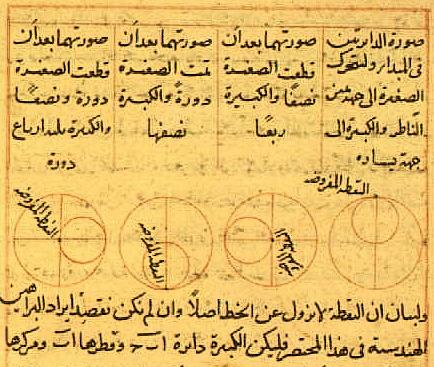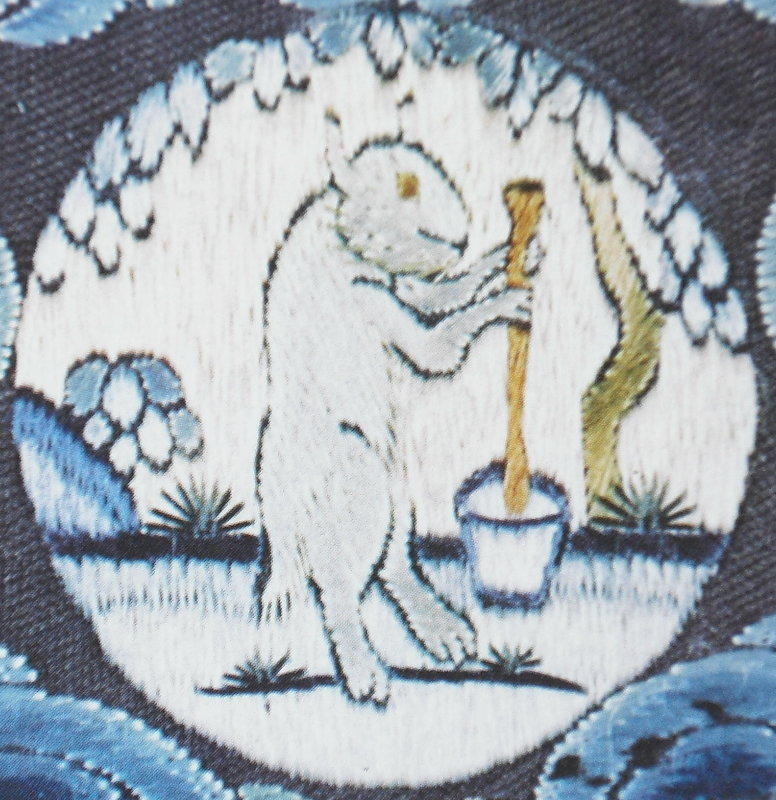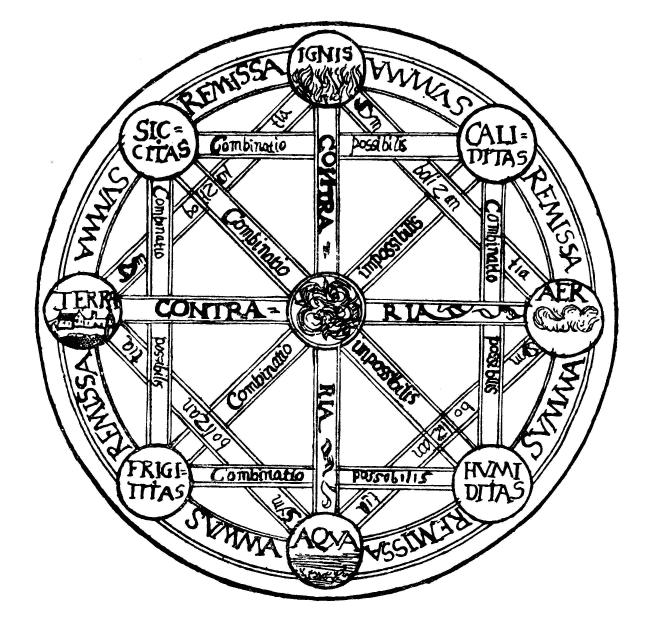|
Alchemist
Alchemy (from the Arabic word , ) is an ancient branch of natural philosophy, a philosophical and protoscientific tradition that was historically practised in China, India, the Muslim world, and Europe. In its Western form, alchemy is first attested in a number of pseudepigraphical texts written in Greco-Roman Egypt during the first few centuries AD.. Greek-speaking alchemists often referred to their craft as "the Art" (τέχνη) or "Knowledge" (ἐπιστήμη), and it was often characterised as mystic (μυστική), sacred (ἱɛρά), or divine (θɛíα). Alchemists attempted to purify, mature, and perfect certain materials. Common aims were chrysopoeia, the transmutation of " base metals" (e.g., lead) into "noble metals" (particularly gold); the creation of an elixir of immortality; and the creation of panaceas able to cure any disease. The perfection of the human body and soul was thought to result from the alchemical ''magnum opus'' ("Great Work"). The co ... [...More Info...] [...Related Items...] OR: [Wikipedia] [Google] [Baidu] |
Alchemy
Alchemy (from the Arabic word , ) is an ancient branch of natural philosophy, a philosophical and protoscientific tradition that was historically practised in China, India, the Muslim world, and Europe. In its Western form, alchemy is first attested in a number of pseudepigraphical texts written in Greco-Roman Egypt during the first few centuries AD.. Greek-speaking alchemists often referred to their craft as "the Art" (τέχνη) or "Knowledge" (ἐπιστήμη), and it was often characterised as mystic (μυστική), sacred (ἱɛρά), or divine (θɛíα). Alchemists attempted to purify, mature, and perfect certain materials. Common aims were chrysopoeia, the transmutation of " base metals" (e.g., lead) into "noble metals" (particularly gold); the creation of an elixir of immortality; and the creation of panaceas able to cure any disease. The perfection of the human body and soul was thought to result from the alchemical ''magnum opus'' ("Great Work"). The ... [...More Info...] [...Related Items...] OR: [Wikipedia] [Google] [Baidu] |
Chinese Alchemy
Chinese alchemy (煉丹術 ''liàndānshù'' "method for refining cinnabar") is a historical Chinese approach to alchemy. According to original texts such as the Cantong qi, the body is understood as the focus of cosmological processes summarized in the five agents of change, or Wuxing, the observation and cultivation of which leads the practitioner into alignment and harmony with the Tao. Therefore, the traditional view in China is that alchemy focuses mainly on longevity and the purification of one's spirit, mind and body, providing, health, longevity and wisdom, through the practice of Qigong and wuxingheqidao. The consumption and use of various concoctions known as alchemical medicines or elixirs, each of which having different purposes but largely were concerned with immortality. ''Pao zhi'' (炮制; ''Pao chi'') or Processing (Chinese materia medica) is used in Traditional Chinese Medicine, such as honey or wine frying and roasting with toxic metals such as mercury, ... [...More Info...] [...Related Items...] OR: [Wikipedia] [Google] [Baidu] |
Philosophers' Stone
The philosopher's stone is a mythic alchemical substance capable of turning base metals such as mercury into gold or silver; it was also known as "the tincture" and "the powder". Alchemists additionally believed that it could be used to make an elixir of life which made possible rejuvenation and immortality. For many centuries, it was the most sought-after goal in alchemy. The philosopher's stone was the central symbol of the mystical terminology of alchemy, symbolizing perfection at its finest, divine illumination, and heavenly bliss. Efforts to discover the philosopher's stone were known as the Magnum Opus ("Great Work"). Antiquity The earliest known written mention of the philosopher's stone is in the ''Cheirokmeta'' by Zosimos of Panopolis (). Alchemical writers assign a longer history. Elias Ashmole and the anonymous author of ''Gloria Mundi'' (1620) claim that its history goes back to Adam, who acquired the knowledge of the stone directly from God. This knowledge ... [...More Info...] [...Related Items...] OR: [Wikipedia] [Google] [Baidu] |
Alchemy And Chemistry In Medieval Islam
Alchemy in the medieval Islamic world refers to both traditional alchemy and early practical chemistry (the early chemical investigation of nature in general) by Science in medieval Islam, Muslim scholars in the medieval Islamic world. The word ''alchemy'' was derived from the Arabic word (), which itself Chemistry (etymology), may derive either from the Egyptian language, Egyptian word ''kemi'' ('black') or from the Ancient Greek, Greek word ('fusion').. After the fall of the Western Roman Empire and the Islamic conquest of Roman Egypt, the focus of alchemical development moved to the Caliphate and the Islamic Golden Age, Islamic civilization. Definition and relationship with medieval western sciences In considering Islamic sciences as a distinct, local practice, it is important to define words such as "Arabic", "Islamic", "alchemy", and "chemistry" in order to gain an understanding of what these terms mean historically. This may also help to clear up any misconception ... [...More Info...] [...Related Items...] OR: [Wikipedia] [Google] [Baidu] |
Science In The Medieval Islamic World
Science in the medieval Islamic world was the science developed and practised during the Islamic Golden Age under the Abbasid Caliphate of Baghdad, the Caliphate of Córdoba, Umayyads of Córdoba, Spain, Córdoba, the Abbadid dynasty, Abbadids of Seville, the Samanid Empire, Samanids, the Ziyarid dynasty, Ziyarids and the Buyid dynasty, Buyids in Persia and beyond, spanning the period roughly between 786 and 1258. Islamic scientific achievements encompassed a wide range of subject areas, especially Astronomy in the medieval Islamic world, astronomy, Mathematics in medieval Islam, mathematics, and Medicine in the medieval Islamic world, medicine. Other subjects of scientific inquiry included Alchemy and chemistry in medieval Islam, alchemy and chemistry, botany and agronomy, Geography and cartography in medieval Islam, geography and cartography, Ophthalmology in medieval Islam, ophthalmology, pharmacology, Physics in the medieval Islamic world, physics, and zoology. Medieval Isla ... [...More Info...] [...Related Items...] OR: [Wikipedia] [Google] [Baidu] |
Magnum Opus (alchemy)
In alchemy, the Magnum Opus or Great Work is a term for the process of working with the prima materia to create the philosopher's stone. It has been used to describe personal and spiritual chrysopoeia, transmutation in the Hermeticism, Hermetic tradition, attached to laboratory processes and chemical color changes, used as a model for the individuation process, and as a device in art and literature. The magnum opus has been carried forward in New Age and neo-Hermetic movements which sometimes attached new symbolism and significance to the processes. The original process philosophy has four stages: *''nigredo'', the blackening or melanosis *''Albedo (alchemy), albedo'', the whitening or leucosis *''citrinitas'', the yellowing or xanthosis *''rubedo'', the reddening, purpling, or iosis The origin of these Humorism, four phases can be traced at least as far back as the first century. Zosimus of Panopolis wrote that it was known to Mary the Jewess. The development of black, white ... [...More Info...] [...Related Items...] OR: [Wikipedia] [Google] [Baidu] |
Elixir Of Life
The elixir of life (Medieval Latin: ' ), also known as elixir of immortality, is a potion that supposedly grants the drinker Immortality, eternal life and/or eternal youth. This elixir was also said to Panacea (medicine), cure all diseases. Alchemy, Alchemists in various ages and cultures sought the means of formulating the elixir. History Ancient Mesopotamia An early mention of an elixir of life is found in the Epic of Gilgamesh (from the 2nd millennium BC) in which Gilgamesh comes to fear his own declining years following the death of his beloved companion Enkidu. He seeks out Utnapishtim, a figure in Mesopotamian mythology known for surviving a great flood sent by the gods and being granted immortality. Gilgamesh is directed by Utnapishtim to find a plant at the bottom of the sea, but he loses it to a serpent before he can use it himself. This legend is an archaic explanation for snakes shedding their skin, seen as mystical rejuvenation. China Many rulers of ancient C ... [...More Info...] [...Related Items...] OR: [Wikipedia] [Google] [Baidu] |
Lead
Lead () is a chemical element; it has Chemical symbol, symbol Pb (from Latin ) and atomic number 82. It is a Heavy metal (elements), heavy metal that is density, denser than most common materials. Lead is Mohs scale, soft and Ductility, malleable, and also has a relatively low melting point. When freshly cut, lead is a shiny gray with a hint of blue. It tarnishes to a dull gray color when exposed to air. Lead has the highest atomic number of any stable nuclide, stable element and three of its isotopes are endpoints of major nuclear decay chains of heavier elements. Lead is a relatively unreactive post-transition metal. Its weak metallic character is illustrated by its Amphoterism, amphoteric nature; lead and lead oxides react with acids and base (chemistry), bases, and it tends to form covalent bonds. Lead compounds, Compounds of lead are usually found in the +2 oxidation state rather than the +4 state common with lighter members of the carbon group. Exceptions are mostly limited ... [...More Info...] [...Related Items...] OR: [Wikipedia] [Google] [Baidu] |
Four Elements
The classical elements typically refer to earth, water, air, fire, and (later) aether which were proposed to explain the nature and complexity of all matter in terms of simpler substances. Ancient cultures in Greece, Angola, Tibet, India, and Mali had similar lists which sometimes referred, in local languages, to "air" as "wind", and to "aether" as "space". These different cultures and even individual philosophers had widely varying explanations concerning their attributes and how they related to observable phenomena as well as cosmology. Sometimes these theories overlapped with mythology and were personified in deities. Some of these interpretations included atomism (the idea of very small, indivisible portions of matter), but other interpretations considered the elements to be divisible into infinitely small pieces without changing their nature. While the classification of the material world in ancient India, Hellenistic Egypt, and ancient Greece into air, earth, fire ... [...More Info...] [...Related Items...] OR: [Wikipedia] [Google] [Baidu] |
Gold
Gold is a chemical element; it has chemical symbol Au (from Latin ) and atomic number 79. In its pure form, it is a brightness, bright, slightly orange-yellow, dense, soft, malleable, and ductile metal. Chemically, gold is a transition metal, a group 11 element, and one of the noble metals. It is one of the least reactivity (chemistry), reactive chemical elements, being the second-lowest in the reactivity series. It is solid under standard temperature and pressure, standard conditions. Gold often occurs in free elemental (native state (metallurgy), native state), as gold nugget, nuggets or grains, in rock (geology), rocks, vein (geology), veins, and alluvial deposits. It occurs in a solid solution series with the native element silver (as in electrum), naturally alloyed with other metals like copper and palladium, and mineral inclusions such as within pyrite. Less commonly, it occurs in minerals as gold compounds, often with tellurium (gold tellurides). Gold is resistant to ... [...More Info...] [...Related Items...] OR: [Wikipedia] [Google] [Baidu] |
Panacea (medicine)
A panacea () is any supposed remedy that is claimed (for example) to cure all diseases and prolong life indefinitely. Named after the Greek goddess of universal remedy Panacea, it was in the past sought by alchemists in connection with the elixir of life and the philosopher's stone, a mythical substance that would enable the transmutation of common metals into gold. Through the 18th and 19th centuries, many "patent medicines" were claimed to be panaceas, and they became very big business. The term "panacea" is used in a negative way to describe the overuse of any one solution to solve many different problems, especially in medicine. The word has acquired connotations of snake oil and quackery. A panacea (or ''panaceum'') is also a literary term to represent any solution to solve all problems related to a particular issue. Mythology In Greek mythology, Panacea was one of the daughters of the Greek god of medicine Asclepius, along with her four sisters, each of whom performed ... [...More Info...] [...Related Items...] OR: [Wikipedia] [Google] [Baidu] |
Chrysopoeia
In alchemy, the term chrysopoeia () refers to the artificial production of gold, most commonly by the alleged transmutation of base metals such as lead. A related term is argyropoeia (), referring to the artificial production of silver, often by transmuting copper. Although alchemists pursued many different goals, the making of gold and silver remained one of the defining ambitions of alchemy throughout its history, from Zosimus of Panopolis (c. 300) to Robert Boyle (1627–1691). The word was used in the title of a brief alchemical work, the ''Chrysopoeia of Cleopatra'' attributed to Cleopatra the Alchemist, which was probably written in the first centuries of the Christian era, but which is first found on a single leaf in a tenth-to-eleventh century manuscript in the Biblioteca Marciana, Venice, MS Marciana gr. Z. 299. The document features an ouroboros containing the words "the all is one" (, '), a concept that is related to Hermeticism. Stephen of Alexandria wrote a work ... [...More Info...] [...Related Items...] OR: [Wikipedia] [Google] [Baidu] |








